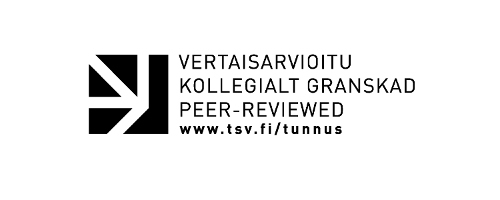Travel, Goods and Virtual Spaces: The Connection between Three Generations in Transnational Families
Keywords:
Families, generations, goods, grandparenthood, information technology, objects, transnationalism, transnational contact, transnational care, travelAbstract
The purpose of this article is to look more closely into the movement of people, goods and information generated by transnational families. The article looks at the family per se, and it questions just how much transnational activity a family generates just by being a family. This article is based on four interviews done in the years 2012 and 2015. Three out of the four interviewees were married to a Finn. The article highlights the time, effort and emotional and financial support given to the second and third generation by grandparents in the country of origin. Because the grandparents are middle-class people living in countries on an economic par with Finland, the economic flow is reversed. The grandparents help the young family out, not vice versa. The European patchwork of small countries puts us in a theoretical position where we speak of transnationalism, even when distances are relatively small. The transnational goods in immigrants’ homes do not primarily carry an ethnic symbolic value. The value in these objects very much lies in who they are from and what it means to receive them. Over the past few decades, huge improvements have been made in communication technology. Still, it is important not to become lost in the technological maze when grabbling with the fact that the basic dynamics of what families actually do have not changed. Nonetheless, it is clear that the nature of how family members communicate has changed tremendously
 .
.







